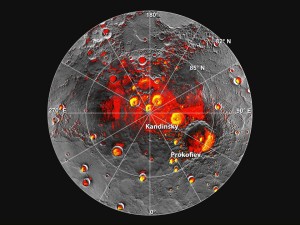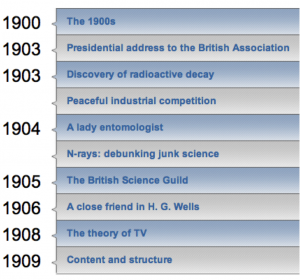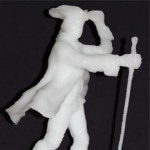 NASA held a news conference today, unveiling new evidence for water ice at Mercury’s polar regions from the MESSENGER spacecraft.
NASA held a news conference today, unveiling new evidence for water ice at Mercury’s polar regions from the MESSENGER spacecraft.
MESSENGER is an acronym for MErcury Surface, Space ENvironment, GEochemistry and Ranging. Powered by two solar panels, it was launched August 3, 2004, reaching Mercury’s orbit March 18, 2011 (UTC).
Mercury has a temperature range of 610 degrees Celsius: 427 degrees on the side closest to the Sun, and -183 degrees on the night side. There are crater floors around Mercury’s poles that are in persistent shade, since its rotation axis does not tilt. NASA’s latest data points to water ice and other frozen deposits in these craters.
The red areas in this image are the permanently shadowed craters of Mercury’s north pole, with the polar deposits in yellow.







